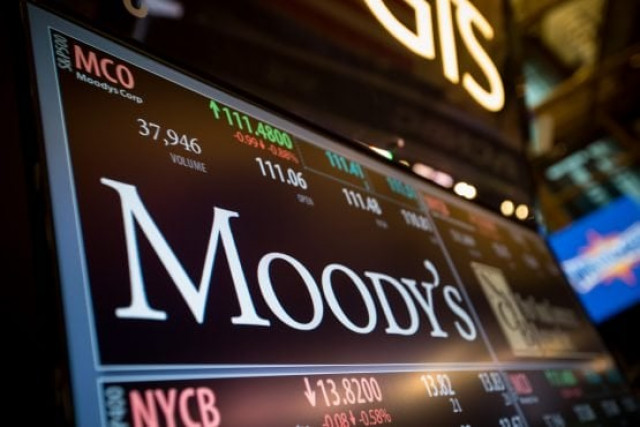Foreign debt, declining reserves pose major challenges: Moody’s
Rating agency already downgraded Pakistan last June

PHOTO: REUTERS
The US-based rating agency said Pakistan would have to repay foreign debt amounting to over 160 per cent of its foreign currency reserves in 2019.
"Our external vulnerability indicator (EVI) reading for…Pakistan and Sri Lanka….exceeds 160% for 2019, indicating that total public and private external debt due over the next year is larger than foreign exchange reserves," Moody's Investors Service said in a commentary on 'Sovereigns – Asia Pacific 2019 outlook stable as domestic strengths counter rising external, policy uncertainties.'
It did not mention what was the debt repayment-to-reserves ratio for the year ended December 31, 2018.
In June 2018, the agency downgraded Pakistan’s credit rating from ‘stable’ to 'B3 negative' after it found the country's foreign currency reserves were insufficient to pay back its foreign debt.
"Low foreign exchange reserves to cope with balance of payment pressures raise external vulnerability risks in Pakistan (B3 negative) and drove our change in the rating outlook in June to negative from stable," it said in the report, which analyses the economic outlook of around two dozen countries around the world.
The agency, however, did not hint at any future changes in the country’s credit rating.
Also on Thursday, the State Bank of Pakistan (SBP) reported that on January 4, the country's foreign currency reserves dropped to a 57-month low of $7.04 billion.
Moody's said foreign exchange reserves are low, and gross borrowing requirements are large in Pakistan and Sri Lanka, threatening the ability of these governments to refinance debt and fund deficits affordably.
Foreign exchange reserves have declined due to persistent current account deficits, which have widened over the past two years.
"The reserves coverage of imports has also fallen, particularly in Pakistan, where reserves are now worth less than two months of goods and services imports," it said.
It said Pakistan would be required to borrow more from foreign bilateral and multilateral agencies to fulfil its needs while its debt affordability would remain weak as global financing continues to become more expensive.
"Tighter global funding conditions resulting in higher credit risk [premiums] and/or [high] domestic interest rates would quickly transmit to government finances…where debt affordability is already weak owing to large gross borrowing requirements," it said.
The five-month-old Pakistan Tahreek-e-Insaf (PTI) government has remained engaged with friendly countries like Saudi Arabia, UAE, China and Malaysia and International Monetary Fund (IMF) to acquire bailout packages to overcome challenges on the external front.
As of Friday (today), Saudi Arabia has parked $2 billion in the country’s foreign currency reserves out of the total $3 billion cash it pledged in October. Besides, it created a credit line of another $3 billion to supply oil on deferred payments.
Similarly, the UAE has pledged a package of around $6.2 billion, which is similar to the one announced by Saudi Arabia. China is also expected to provide between $2 and $3 billion in cash in the near future.
Pakistan is also set to sign memorandums of understanding with friendly countries to attract foreign direct investment to the total tune of $30-40 billion over the next three to five years.
In addition to this, Pakistan remains engaged in dialogue with the IMF for a bailout of around $6 billion.
At domestic level the government has depreciated the rupee against the dollar to scale down demand for the currency and shore up foreign currency reserves.
Also, it has aggressively increased the benchmark interest rate to make banking credit expensive so that aggregated demand in the overheated economy could weaken, narrow the currency account deficit, and lower the burden on foreign currency reserves.
The country has increased the benchmark interest rate by aggressive 4.25 percentage points to 10% and devalued the rupee by a massive 32% to Rs138.85 to the US dollar in the last 13 months.



















COMMENTS
Comments are moderated and generally will be posted if they are on-topic and not abusive.
For more information, please see our Comments FAQ